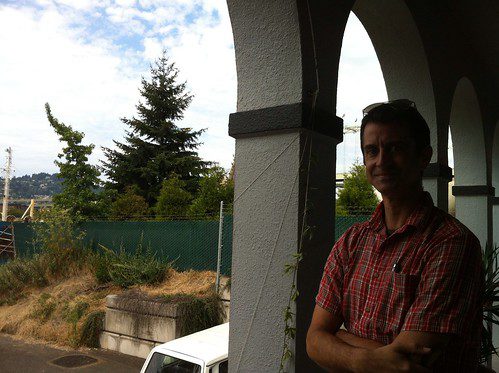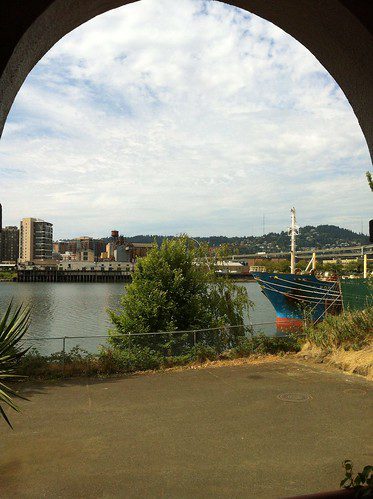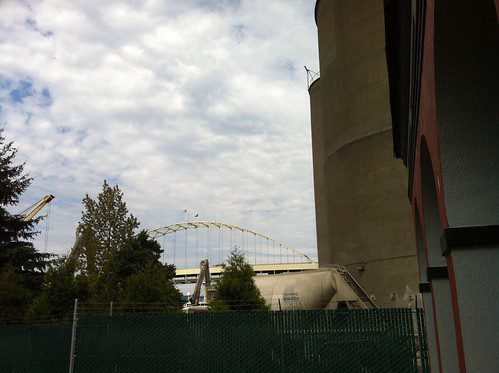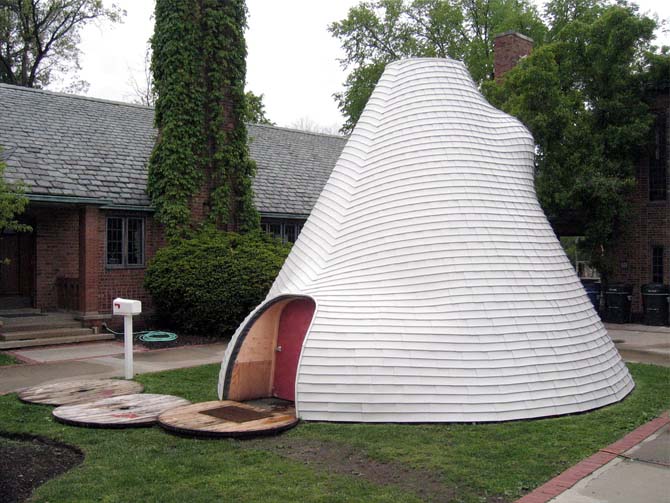Here’s a mishmash of maybes, that got me really excited last week.
Meeting filmmaker Matt McCormick:
Seeing his awesome studio on River St between the cement and grain silos, just S of the Fremont St Bridge. With a hole in the parking lot chain link you have sneaky in/out access to the Willamette River, and possibly a site for conversations and some local tea:
Reading Garibaldi, A. and N. Turner. 2004. Cultural keystone species: implications for ecological conservation and restoration, and musing about what and who constitute culturally and ecologically significant (albeit geotemporally brief) keystone species (cows and concrete and corn, to name a few provocateurs):
Ecologists have long recognized that some species, by virtue of the key roles they play in the overall structure and functioning of an ecosystem, are essential to its integrity; these are known as keystone species. Similarly, in human cultures everywhere, there are plants and animals that form the contextual underpinnings of a culture, as reflected in their fundamental roles in diet, as materials, or in medicine. In addition, these species often feature prominently in the language, ceremonies, and narratives of native peoples and can be considered cultural icons. Without these “cultural keystone species,” the societies they support would be completely different. An obvious example is western red-cedar (Thuja plicata) for Northwest Coast cultures of North America. Often prominent elements of local ecosystems, cultural keystone species may be used and harvested in large quantities and intensively managed for quality and productivity. Given that biological conservation and ecological restoration embody human cultures as crucial components, one approach that may improve success in overall conservation or restoration efforts is to recognize and focus on cultural keystone species. In this paper, we explore the concept of cultural keystone species, describe similarities to and differences from ecological keystone species, present examples from First Nations cultures of British Columbia, and discuss the application of this concept in ecological restoration and conservation initiatives.
– Ecology and Society
Finding a motherlode of Willamette River Superfund info, which I’m aggregating here:
Connecting with Sara Huston, who, with her partner John, designs under the name The Last Attempt at Greatness. We are going to talk about some structures we might make, to serve really local things (like Willamette chai or English ivy).




